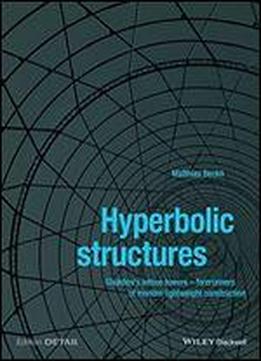
Hyperbolic Structures: Shukhov's Lattice Towers - Forerunners Of Modern Lightweight Construction
by Matthias Beckh /
2015 / English / EPUB
54.3 MB Download
Working at the threshold of the Modern Age, Vladimir G. uchov (Shukhov) is regarded as one of the world's most outstanding and versatile engineers. Some of his fascinating and technically sophisticated structures, always so delicately proportioned they cannot fail to catch the eye, have no equivalent among the structures of today. From the time Shukhov built the first hyperbolic lattice tower at the end of the 19th century, he has been seen as the founder and developer of this then new form of construction. This structure, with a seemingly complex geometry definable with only a few basic parameters, has no predecessors in the history of construction. It excels through its high stability and economy of material but above all through the visual impact of its web-like arrangement of members. Setting Shukhovs work in the context of the history of construction shows that he and his new structural forms anticipated many of today's engineering and lightweight structures. The principles of Shukhovs load-bearing systems are used in architecture today, for example in the structural engineering of high-rise buildings. Hyperbolic structures analyses the interactions of form with the structural behaviour of hyperbolic lattice towers, and the effects of the various influencing factors were determined with the help of parametric studies and load capacity analyses. This evaluation of Shukhovs historical calculations and the reconstruction of the design and development process of his water towers shows why the Russian engineer is considered not only a pathfinder for lightweight structures but also a pioneer of parametrised design processes.











